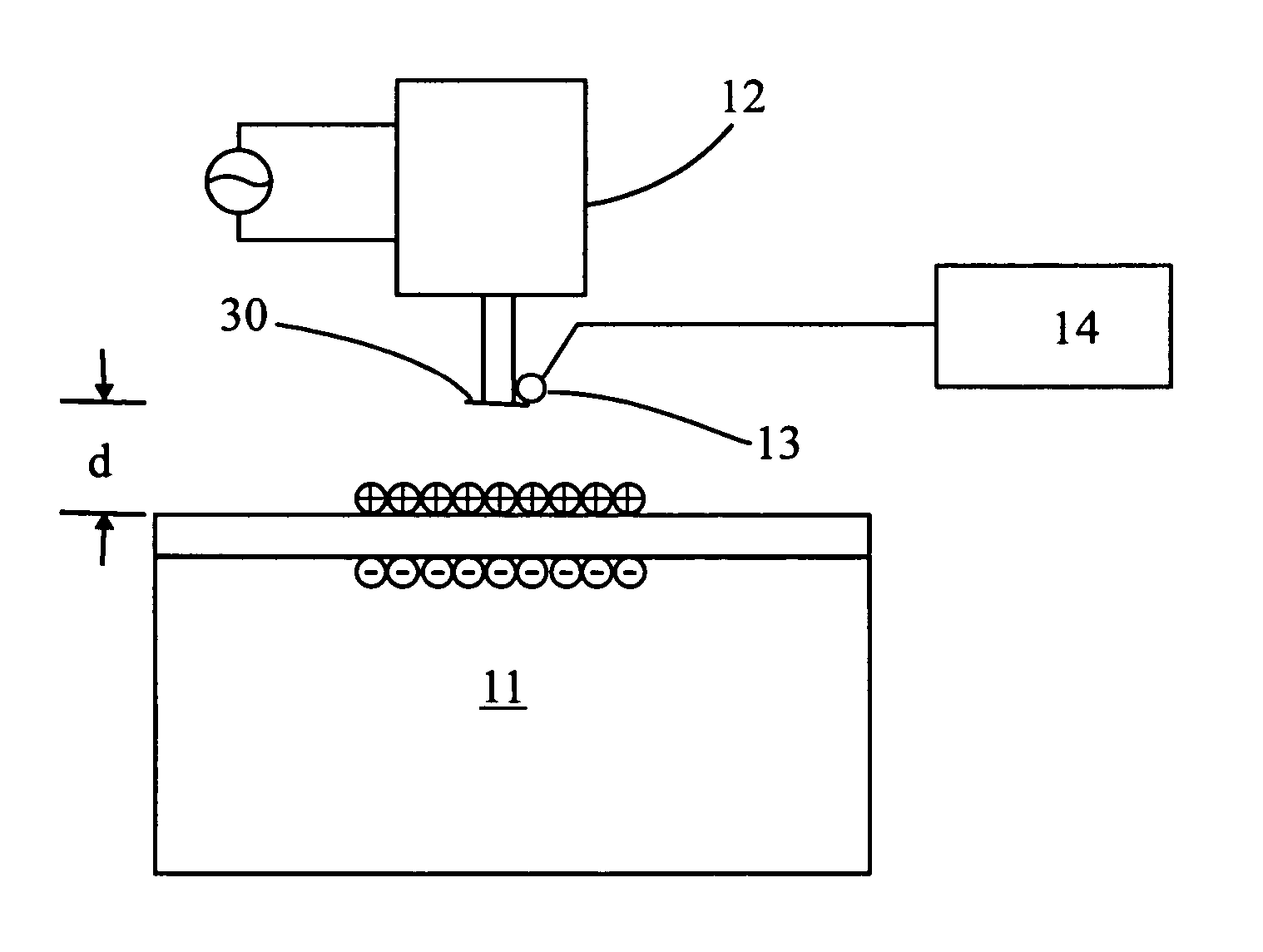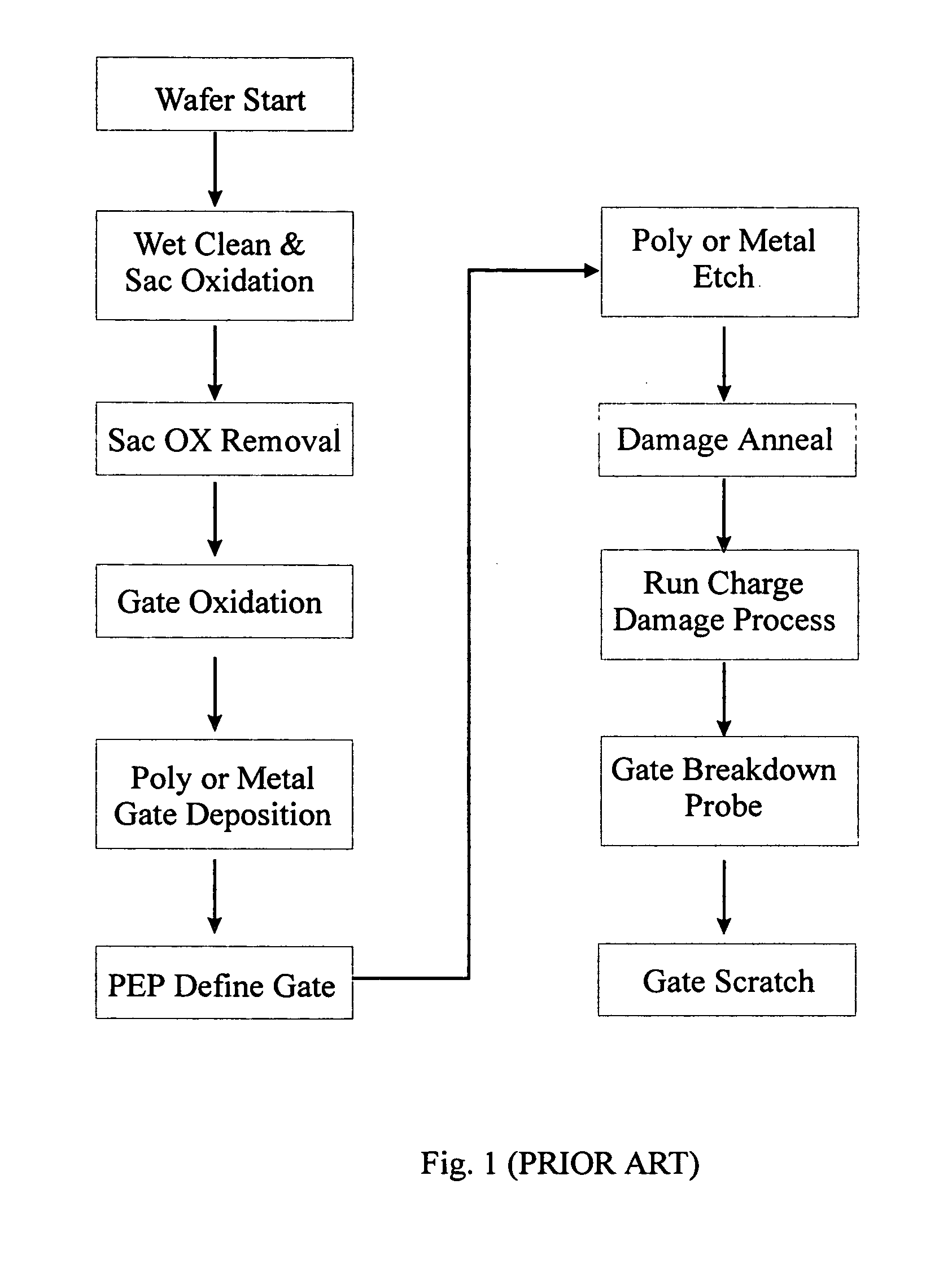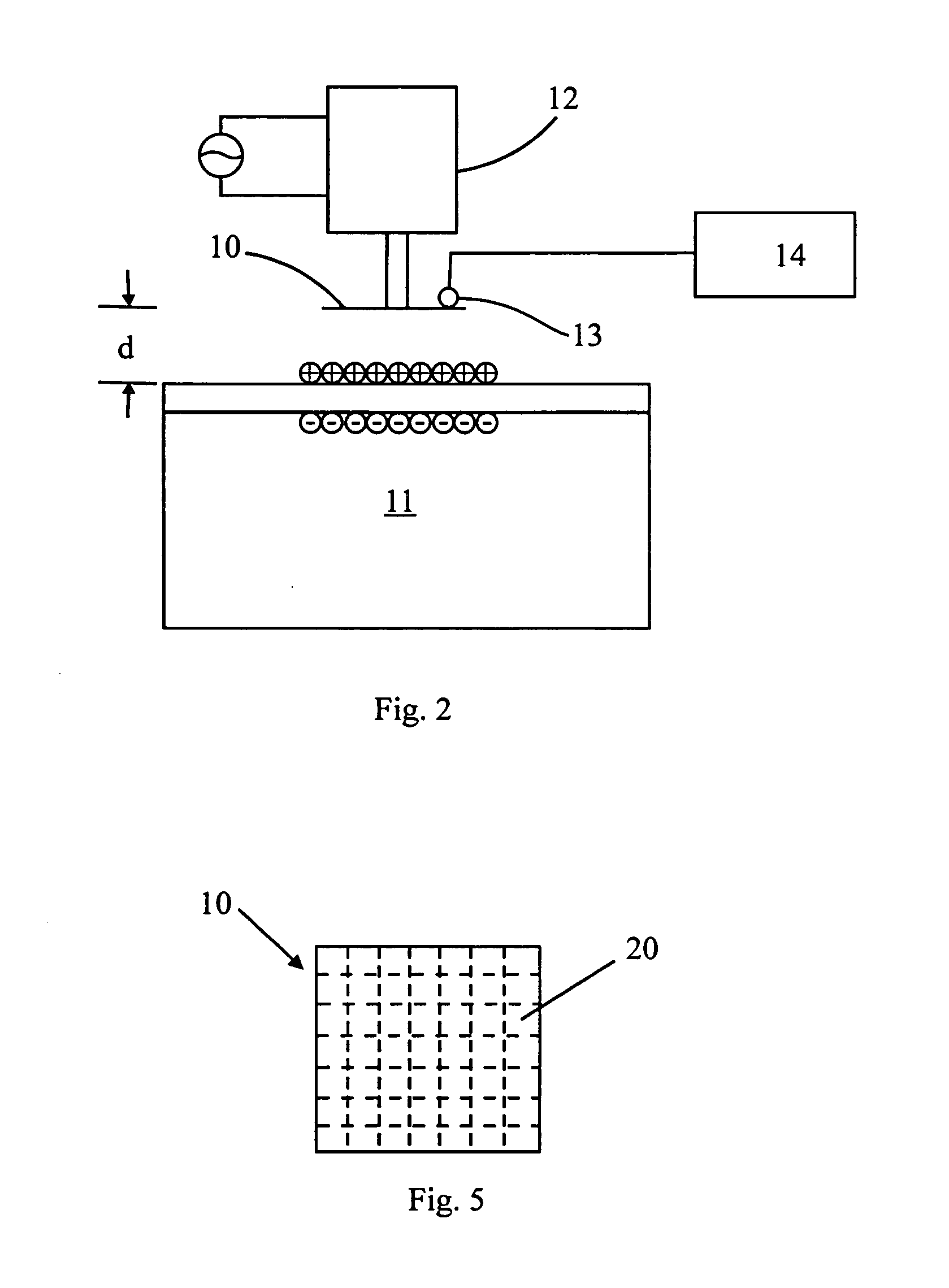Method and apparatus for detecting electrostatic charges during semiconductor fabrication process
a technology of electrostatic charges and semiconductors, applied in the direction of electronic circuit testing, measurement devices, instruments, etc., can solve the problems of affecting the performance of semiconductor devices, and causing undesirable problems, etc., to achieve the effect of a rinsing process, reduce the physical dimensions of semiconductor devices, and high electric and corrosion resistan
- Summary
- Abstract
- Description
- Claims
- Application Information
AI Technical Summary
Benefits of technology
Problems solved by technology
Method used
Image
Examples
example 1
[0031]FIG. 2 shows a first preferred embodiment of the apparatus for carrying out the method of the present invention to detect electrostatic charges on a wafer surface.
[0032] In FIG. 2, it is shown a capacitor plate 10 which is positioned above a wafer surface 11 on which a two-dimensional distribution of electrostatic charges is to be measured. The capacitor plate 10 is controlled by a mechanical vibrator 12, which causes the wafer 11 to move vertically as well as horizontally. A movable probe 13, which is connected to a Kelvin probe electronics 14, is utilized to measure (i.e., scanning) voltages at various locations at the capacitor plate 10.
[0033] After the capacitor plate 10 is moved by the mechanical vibrator 12 to a predetermined horizontal above the wafer surface with a predetermined distance separating the two, the movable probe 13 begins to scan over the capacitor plate 10 to obtain a two-dimensional voltage distribution at the capacitor plate 10. The measured voltage Δ...
example 2
[0035]FIG. 3 is a schematic flowchart diagram showing the main steps of including the method of the present invention in a semiconductor device fabrication process. Compared to the conventional process as shown in FIG. 1, the method of the present invention is much more simplified. After an oxide layer is formed (Gate Oxidation), it is subject to a water rinsing step (Run Charge Damage Process). Thereafter, the steps described in Example 1 is performed (Wafer Surface Voltage Measurement). Since the method disclosed in the present invention does not require any additional physical contact with the wafer surface, the wafer fabrication process can be resumed without any interruption (Wafer Re-use, or Gate Oxide Removal).
[0036]FIG. 4A shows results obtained from a trouble-shooting test utilizing the method of the present invention. Initially, the accumulation of electrostatic charges was thought to be due to inadequate pressure of the de-ionized water. However, as shown in FIG. 4, incr...
example 3
[0037] In the second embodiment of the present invention, the apparatus is identical to that described in Example 1, except that the capacitor plate 10 is made of a plurality of isolated electrode sub-plates 20. This embodiment allows a better defined capacitor area to be employed for more quantitative results.
PUM
 Login to View More
Login to View More Abstract
Description
Claims
Application Information
 Login to View More
Login to View More - R&D
- Intellectual Property
- Life Sciences
- Materials
- Tech Scout
- Unparalleled Data Quality
- Higher Quality Content
- 60% Fewer Hallucinations
Browse by: Latest US Patents, China's latest patents, Technical Efficacy Thesaurus, Application Domain, Technology Topic, Popular Technical Reports.
© 2025 PatSnap. All rights reserved.Legal|Privacy policy|Modern Slavery Act Transparency Statement|Sitemap|About US| Contact US: help@patsnap.com



